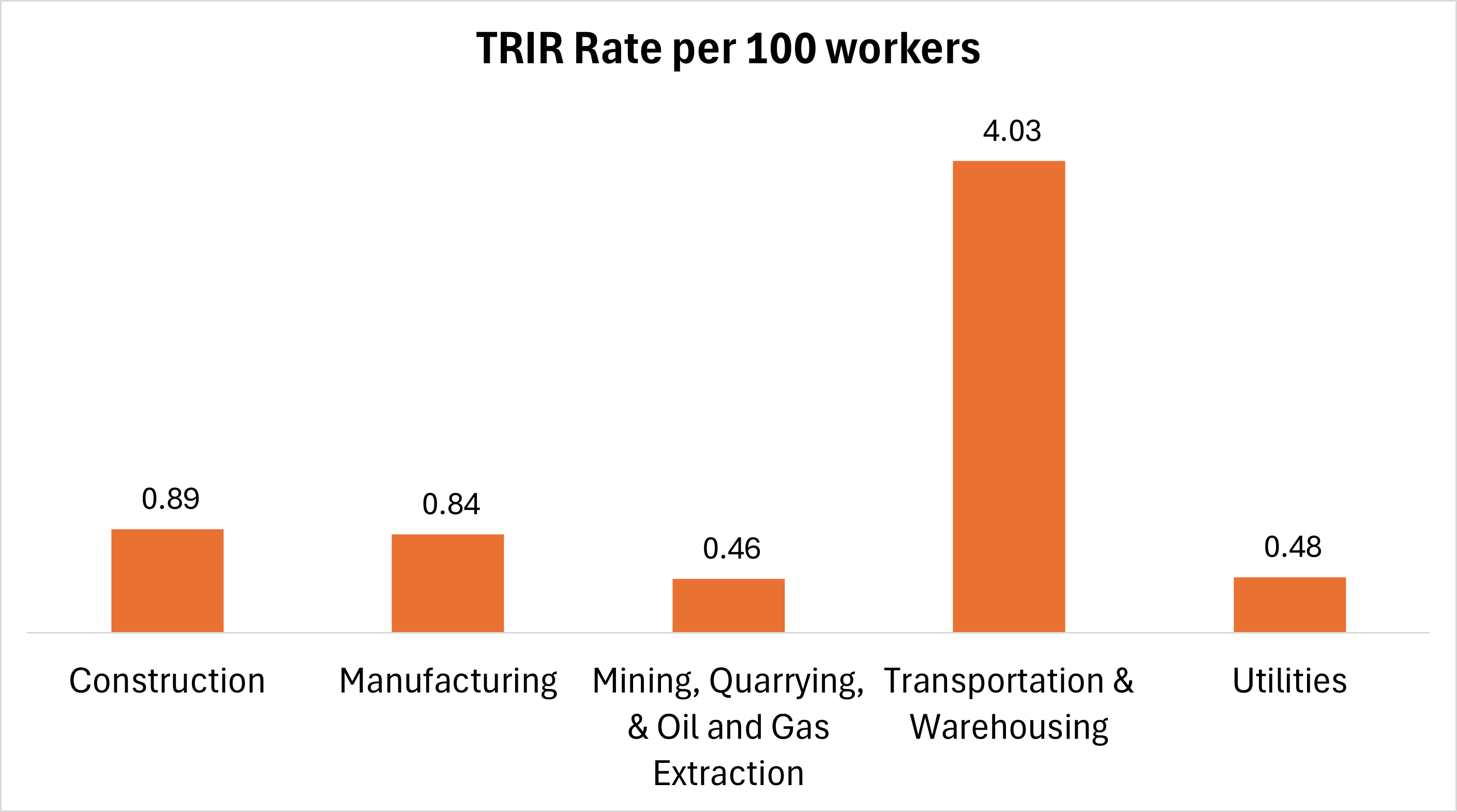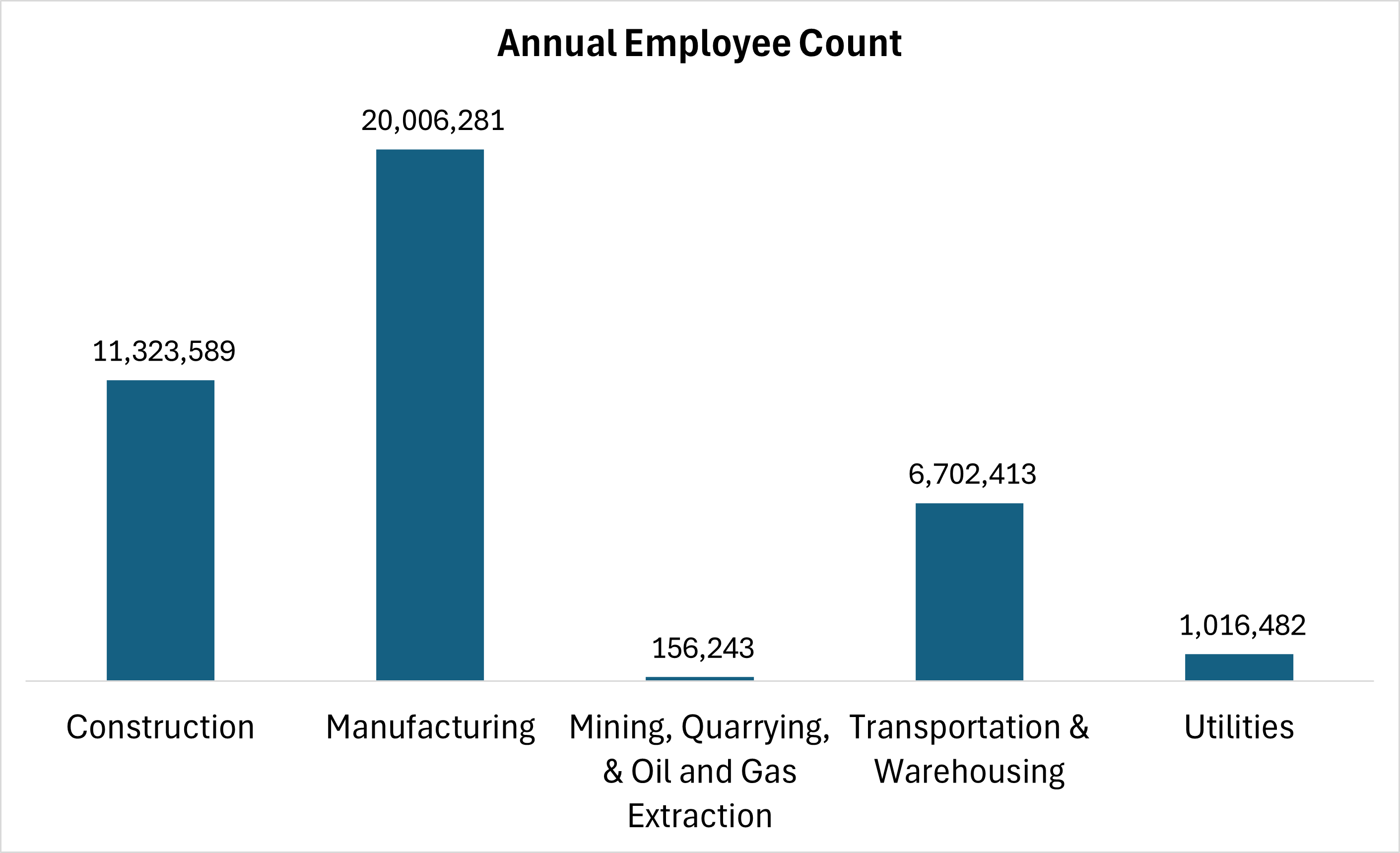When it comes to workplace safety, numbers tell a story – but only if you know how to read them. After reviewing OSHA's recently released 2023 ITA 300 report, we found ourselves wanting to dig deeper. We analyzed TRIR, LTIR, DAFW severity, and fatality rates across major industrial sectors, aiming to provide safety professionals with a more comprehensive view of industry safety performance and useful benchmarks for their own operations.
Understanding the Metrics Together
Every safety professional knows the pressure of monthly and quarterly safety reviews. While Total Recordable Incident Rate (TRIR) often dominates these discussions, it's just one piece of a larger picture. Each metric – from Lost Time Incident Rate (LTIR) to Days Away From Work (DAFW) severity rates – reveals different aspects of safety performance. Let's examine how these metrics work together across major industrial sectors to tell a more complete story.
Understanding Safety at Scale
Empty space, drag to resize
Total Recordable Incident Rates (TRIR) per 100 workers by industry sector.
Empty space, drag to resize
Workforce size by industry sector, highlighting the scale differences in industrial operations.
Empty space, drag to resize
Manufacturing presents an intriguing case study in safety management. With over 20 million employees, the sector maintains relatively low incident rates across all metrics. A TRIR of 0.84 is commendable – but with this massive workforce, it still translates to thousands of incidents annually. This highlights a key challenge: maintaining consistent safety performance across large-scale operations.
Beyond Frequency: Severity Matters
Empty space, drag to resize
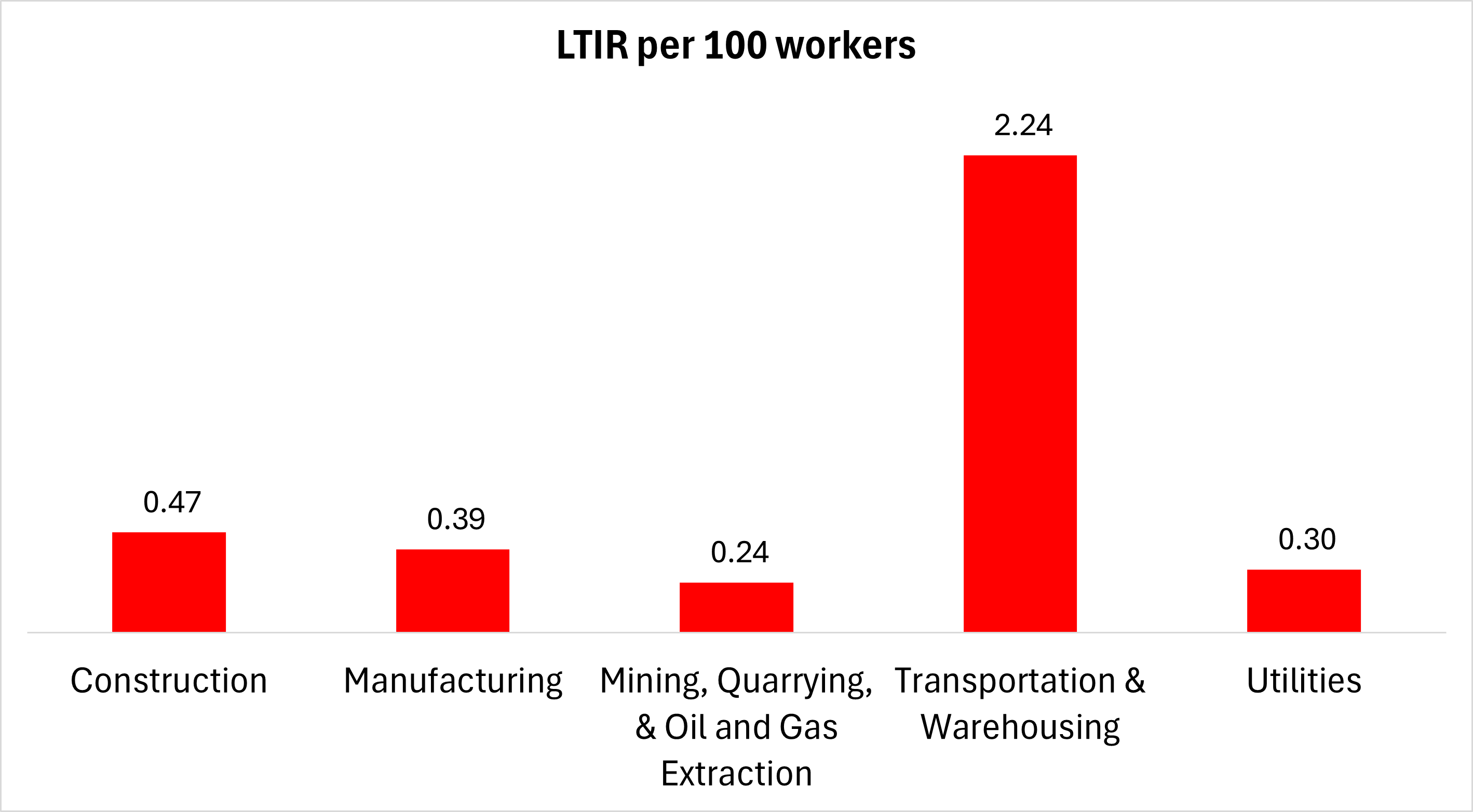
Lost Time Incident Rates (LTIR) per 100 workers by industry sector.
Empty space, drag to resize
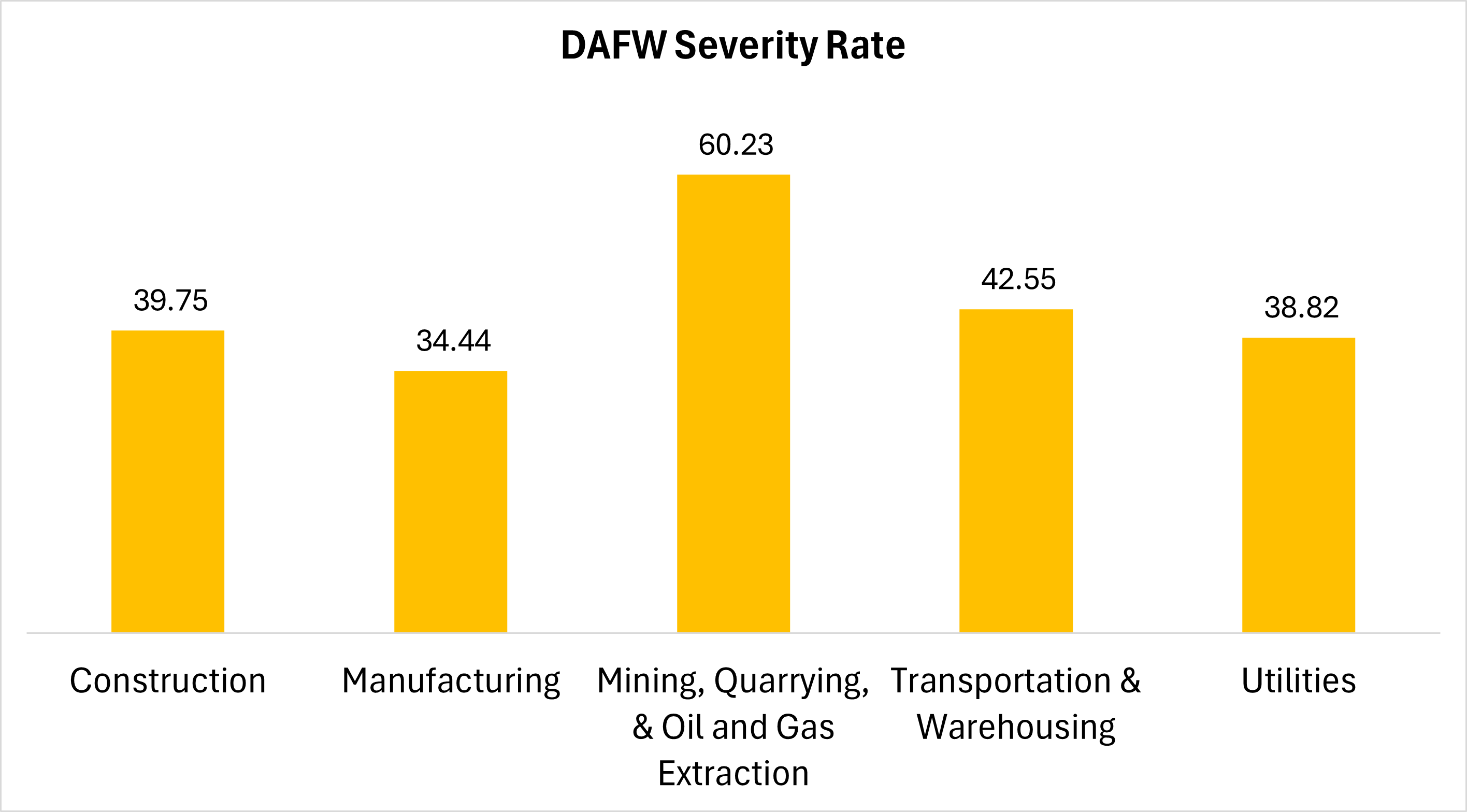
Days Away From Work (DAFW) severity rates by industry sector.
Empty space, drag to resize
Lost Time Incident Rate (LTIR) and Days Away From Work (DAFW) severity rates reveal different patterns across industries. Mining/Oil & Gas shows higher severity rates, suggesting that when incidents do occur, they tend to be more serious. This points to the importance of focused prevention strategies in high-risk operations, even when dealing with a smaller workforce.
Different Industries, Different Challenges
Empty space, drag to resize
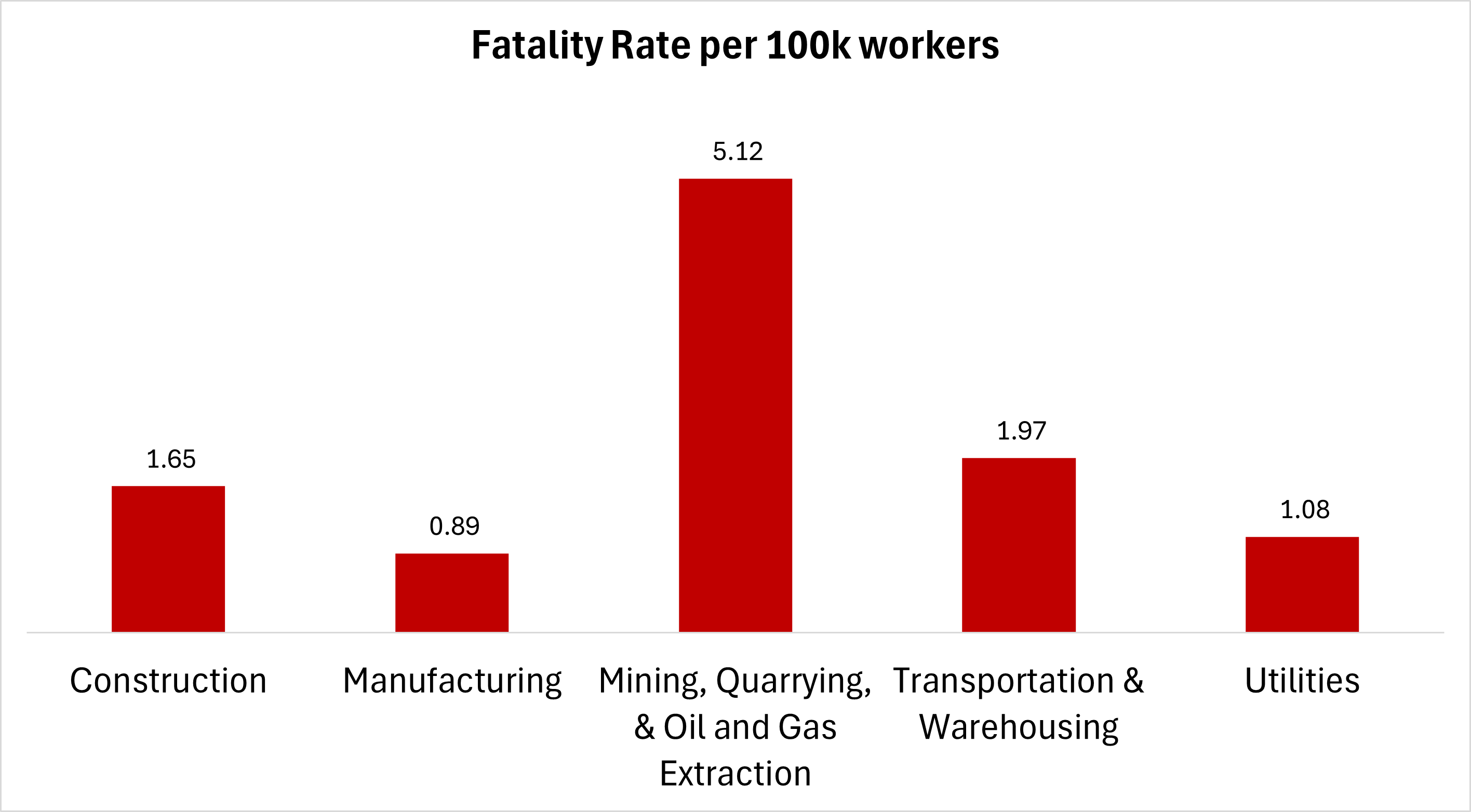
Fatality rates per 100,000 workers across industrial sectors.
Empty space, drag to resize
Transportation & Warehousing presents yet another pattern: high rates across multiple metrics (TRIR: 4.03, LTIR: 2.24) combined with a large workforce of 6.7 million employees. This combination of high rates and large scale points to widespread safety challenges that need to be addressed at both the organizational and individual facility level.
What This Means for Safety Managers
- Similar TRIR rates across industries can mask important differences in severity and impact, requiring different prevention strategies
- Larger workforces face the challenge of maintaining consistency, while smaller workforces may see individual incidents dramatically impact rates
- Industry-specific operational complexities influence both the frequency and severity of incidents
Moving Forward
As safety professionals, we need to consider three key dimensions: how frequently incidents occur (rates), how severe they are (DAFW/severity), and how many workers are affected (scale). This comprehensive perspective helps:
- Develop more targeted prevention strategies based on your specific risk profile
- Benchmark performance more accurately against industry peers
- Create more effective incident investigation and prevention programs
- Set realistic safety goals that account for operational scale and complexity
Want to learn more about how we're using these insights to develop more effective safety training? Visit
www.wellsitelms.com or reach out to us at
admin@wellsitelms.com.
Sources: BLS, Statista, FRB, OSHA
